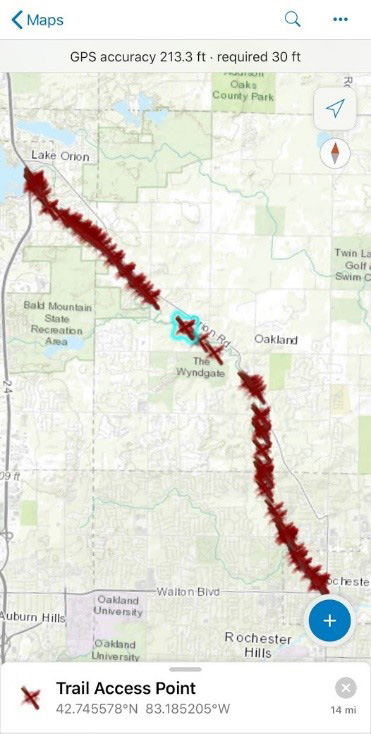Meeting the Needs of Older Adults in Rural Communities
There are 46 Million Americans Over the Age of 65 Today
This number will rise to 64 million by 2030 and 90 million by 2050. Rural areas are aging at a faster rate than the general population as older adults disproportionately live in rural communities. A majority of rural seniors are rural by choice and want to age in place, which means the right facilities and housing types need to be available and affordable. Though homeownership rates are high among rural seniors, affordability concerns are still prevalent: 54 percent of senior renters and 24 percent of senior owners have difficulty affording housing. Just under a third of rural and small town seniors earn less than $20,000 annually, and many are on fixed incomes. Further, homes need to be well-maintained and safe, with living accommodations on one floor. Ensuring that older adults can safely and comfortably age in place, while maintaining a high quality of life, is one of the principal planning challenges today.
Housing for Seniors, including Alternative Housing Types & Assisted Living
In general, housing directly catering to seniors, including assisted living facilities, is less available in rural areas than in metropolitan areas. Recognizing older adults may prefer to remain in their homes as long as possible, local panning efforts should address three broad categories:
- Retrofitting and maintaining existing housing. Some seniors may need assistance maintaining their homes, whether in terms of affordability or capability. Communities may be able to access funding to establish minor home repair programs that can help homeowners prevent small problems from becoming bigger problems. In addition, there are a range of modifications that can increase accessibility within a home. Easy alterations include adding nonslip strips to bathroom floors or other smooth surfaces, improving lighting, and installing grab bars and lever-style door handles. More complex modifications include installing ramps, chairlifts or stair glides, widening doorways, installing roll-in showers or showers with benches, and lowering countertops. Communities may be able to provide resources such as retrofit guides, lists of local tradespeople who specialize in home improvement, and volunteers who may offer general maintenance or home improvement assistance.
- Providing housing. What housing stock is available in the area? When was it built? Are properties available both to rent and to own? Is there housing available, such as apartments or condos, that does not require a great deal of exterior maintenance on the part of the resident? Seniors who would like to remain in their communities will need options, including options that meet their accessibility requirements. Homes without stairs and homes with at-grade entryways are two examples of the type of unit that can more easily accommodate people as they age.
- Affordability. As noted previously, affordability is a challenge for a significant portion of the rural senior population. Creating a regulatory environment that is conducive to permitting a variety of housing types is one step a municipality can take toward improving housing affordability. Assisting existing homeowners in their efforts to remain in the homes they already own outright can limit financial disruption.
Senior Services
Healthcare
Demand for healthcare services is highest among seniors, and access to care is important. In areas where services are distant or widely spread out, communities can leverage alternative transportation options to provide access; it is also important to ensure that health care uses are permitted where they are needed. Operating a senior center, as a community or in partnership with neighboring communities, helps keep older residents socially engaged and mentally active
Transportation
In most rural communities, the only practical way to access services, employment, and basic needs such as grocery stores is via automobile, but many older people lose the ability to drive themselves or in some cases may not be able to afford to keep a vehicle. Diminished mobility can also leave senior residents isolated from the rest of the community. Transportation options are often more limited in rural communities, but alternatives to driving often do exist. Understanding the resources available and coordinating to ensure that service is available when needed can enable to seniors to maintain their quality of life, even after they give up driving. In small towns, walkability is important— sidewalks and crosswalks are essential pathways for people with limited mobility options. Non-motorized facilities help seniors not only with transportation, but increases opportunities for physical activity, essential as adults
Opportunities for Engagement
Older adults often play a critical role in communities, giving their time as volunteers on municipal boards and in civic organizations. Communities can reach out directly to their senior populations to inform them of engagement opportunities and facilitate their involvement. With their wealth of experience, older people are an enormous asset to any community. Senior volunteers, especially those who show exceptional engagement, should receive official community recognition for their efforts.
Planning & Zoning News from Our Communities:
We are Thankful for… GIS!

What is GIS? “A Geographic Information Systems (GIS) is a framework for gathering, managing, and analyzing data. Rooted in the science of geography, GIS integrates many types of data. It analyzes spatial location and organizes layers of information into visualizations using maps and 3D scenes.” – ESRI
Why are we thankful? This summer our Planning team assisted the Paint Creek Trailways Commission with their 5-year master plan update. The primary focus of the project was to evaluate the trail and associated amenities from an ADA (Americans with Disabilities) standpoint to ensure the trail is accessible for all users. Our planning and GIS teams collaborated and utilized the GIS collector app, which made photographing, documenting, tagging photo locations and data export simple, easy and effective.
For more information, please call Giffels Webster at 866.271.9663 and visit www.giffelswebster.com.